Basic Definition
A bedroom is a room in a home or building with a bed primarily used for sleeping or resting. It is furnished according to the convenience of the occupant so that it can be comfortable for the user. Bedrooms are typically furnished with full, double, king, or queen-size beds, a wardrobe, a bedside table, a dressing table, a T.V. unit, and sofas. [7] These pieces of furniture are required in every bedroom; bedrooms are typically designed to accommodate the comfort of one or two people. It is a private area where people do their private activities, so it should be designed to fulfill all the user’s needs. [6]
Facilities are required for:
- Sleeping
- Relaxing/Resting
- Leisure (like music, dance, computers, etc.)
- Studying
- Storing goods
- Additional facilities:-
- Attached Toilet/Bathroom [4]
- Walk-in Closet
- Sit out
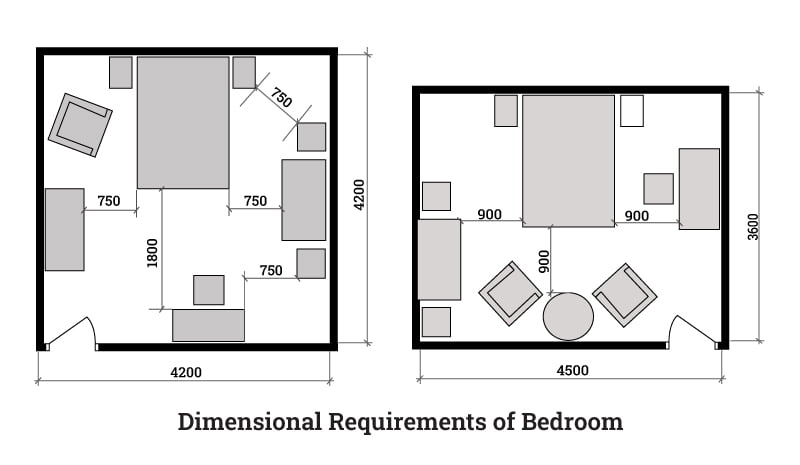
Suitable location of the Bedroom as per Vaastu
As per “Vaastu Shastra,” the suitable location for the bedroom is in the “South-West” direction. This is because when we sleep, our heads should face south and our feet should face north. [8]
Bedrooms should not be located under or adjacent to circulation areas or rooms of a different function in another dwelling. [4]
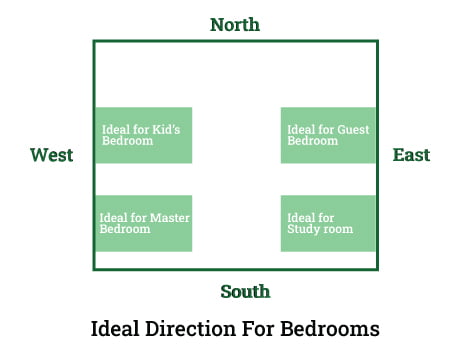
Types of Bedrooms based on the layout
- The standard dimensions of a bedroom are 3000 mm x 3600 mm.
- The standard dimensions of a master bedroom are 4200 mm x 4800 mm.
- The layout of bedrooms can be designed in many ways; it depends on the user and the needs of the space.
- Institutional and commercial bedrooms can have different layouts as per the needs of different users or the design.
- Some bedrooms with smaller areas meet the needs better than larger ones due to room layout. [1]
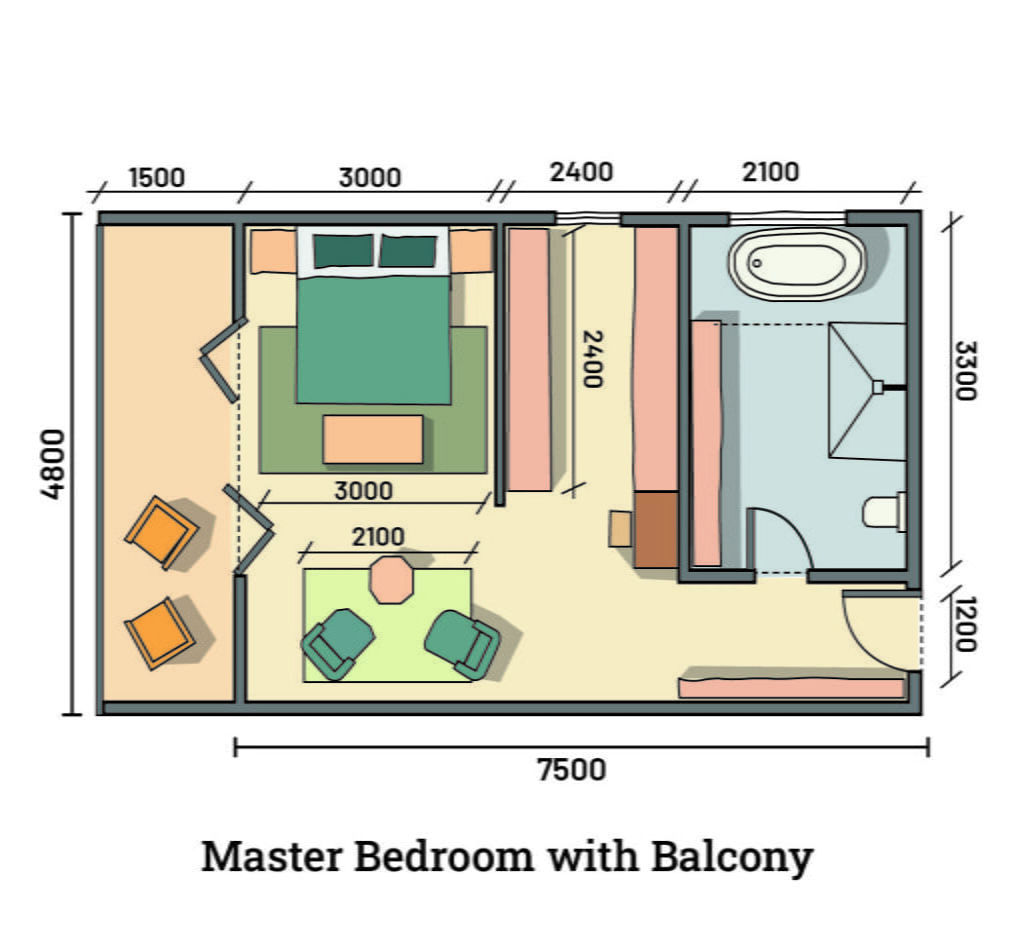
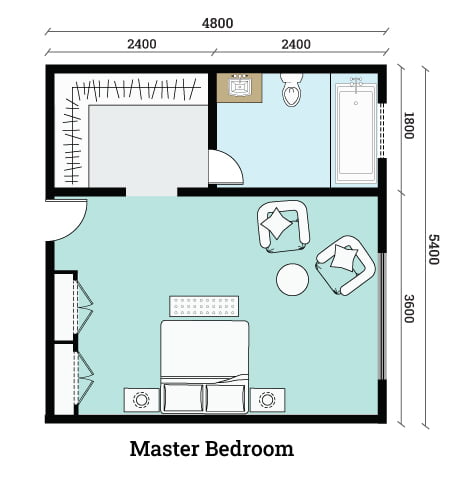
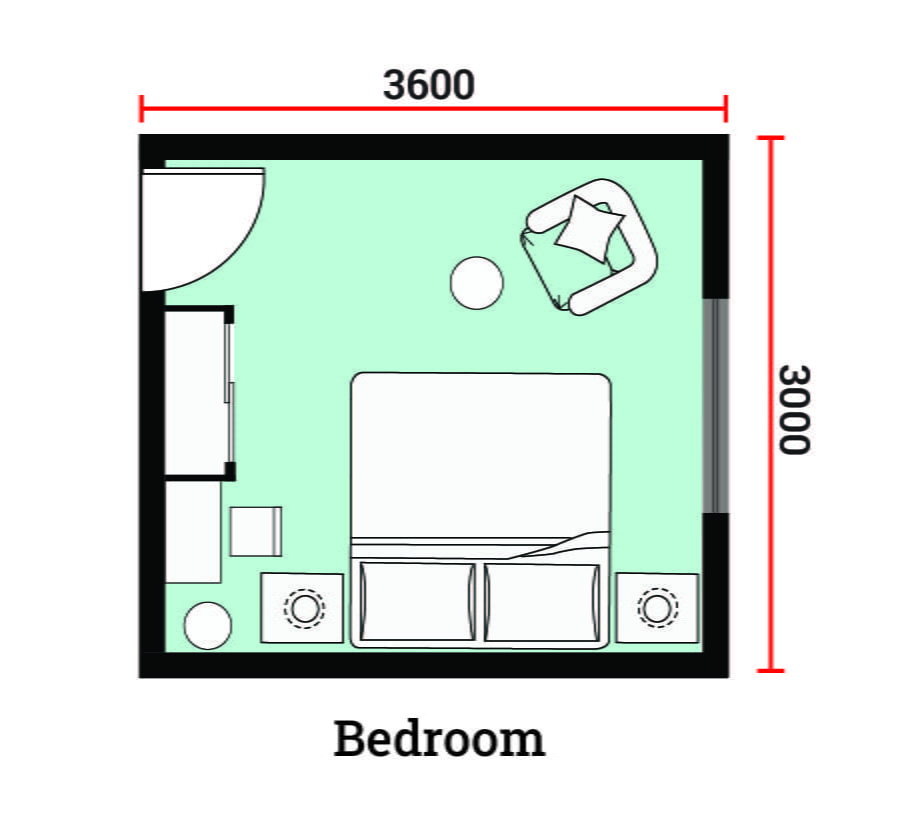
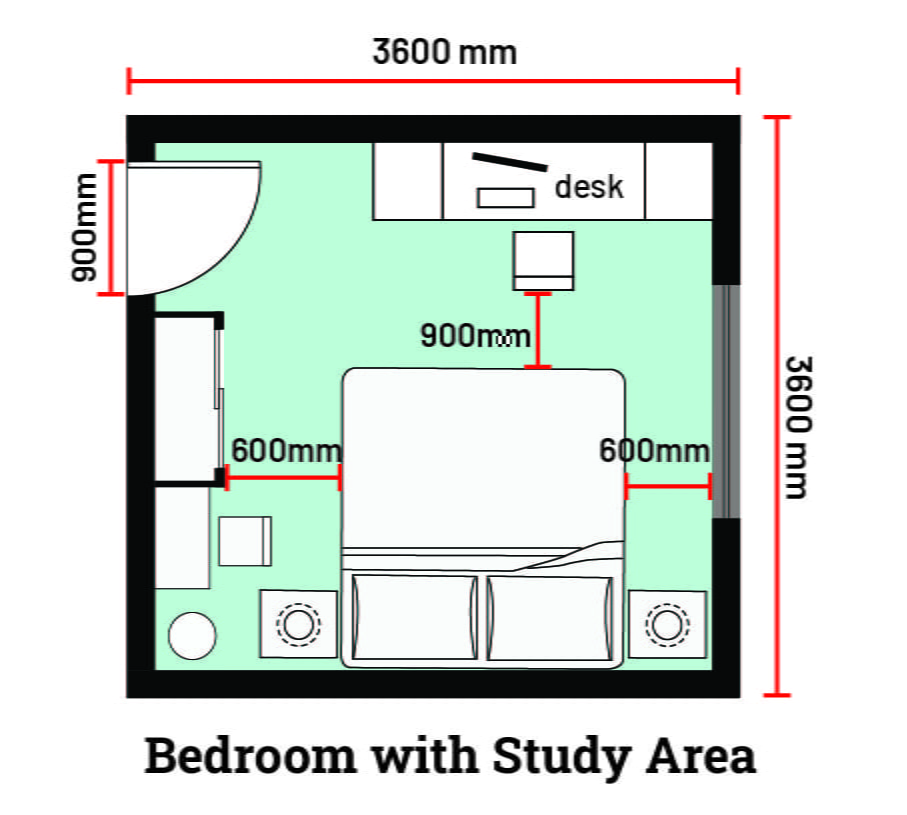
Bedroom with study area
A bedroom with a study area offers a harmonious blend of comfort and productivity, serving as a versatile space with several advantages. It optimizes space usage, particularly in small houses where a separate study room cannot be designed.
The dimensions of the bedroom with study area should be a minimum of 3600 x 3600 (12 x 12 ft.). This much space is suitable for a bed, dressing area, study area, and some storage options. A minimum of 2 Sqm. is required for a study area; you can go up to 5 Sqm. depending on the design and luxury of your study area. It is recommended that you place the bed behind the study area so that you won’t be lured into a quick nap or any other distractions. The layout of the bedroom with study area is shared above.
Design Parameters for the Bedroom
Factors to consider while designing a bedroom
- Circulation inside the bedroom is smooth; furniture placement is not becoming an obstruction to movement.
- Furniture placement is very necessary, and sticking with standard-sized furniture is also important.
- While designing a bedroom, you should highly consider the position of the window or balcony because it is the source of natural light, air, and a good view option.
- While distributing the spaces, privacy should be maintained. [6]
Minimum/Maximum height of the furniture
- The average bed height with mattress thickness should be between 400 and 650 mm. We can also change the height as per the comfort level of the user.
- The height of the study table should be 750 mm. [4]
- The dressing table’s height should be between 750 to 800 mm.
- The preferable height of the wardrobe should be between 1900 mm and 2400 mm. A human hand can easily reach a height of 2100 mm, which can be taken as a limit for designing a wardrobe. These days, users are opting for full-length wardrobe height, which is also a good option. But design shelves and storage up to 2400 mm, and above that, make storage for mattresses and other stuff that is not regularly used.
- The minimum height of the bedside table should be between 450 to 550 mm.
For more standard dimensions of furniture related to bedroom, click here (You can also download these CAD Blocks, for free):-
Standard Clear space from the furniture
- The bed should have a clear space of 450 mm to 600 mm for bed-making.
- There should be a clear space of 1500 mm in front of the study table to easily sit and move while studying.
- The clear depth of the wardrobe should be 600 mm, and a minimum of 900 to 1200 mm of clear space is needed to operate it. [4]
- The furniture should be placed at least 30mm to 50 mm away from the wall. [1]
- At least 75 mm of clear space between two pieces of furniture. [2]
Circulation inside the bedroom
- The double bed should have a clearance of 600 to 750 mm around it for smooth circulation. This much of space is also required for bed making.
- Any furniture should not be placed in the way of circulation.
- Spaces should be well divided to avoid unusual movement.
Ergonomics/ Standard dimensions related to bedroom
The ergonomics of the bedroom can be fulfilled by taking care of the facilities and comfort of the users. Below are some standard bedroom dimensions for easy moving and standard living. The bedroom is a private area, and it should have all the leisure activities so we can relax in a good environment. (Source: Neufert, Timesavers, Metric Handbook, etc.)
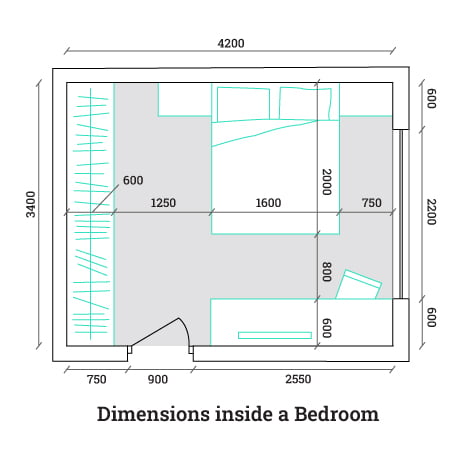
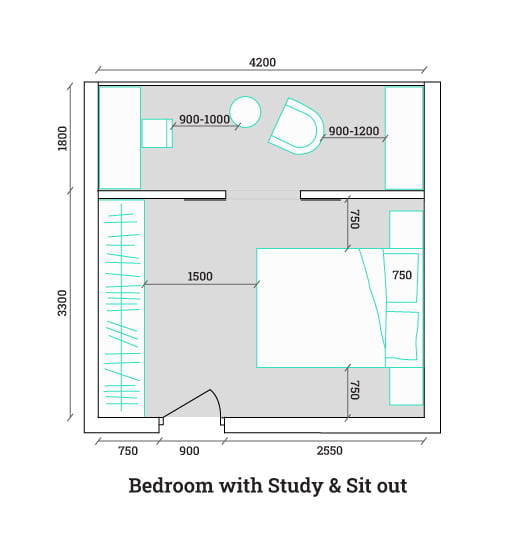

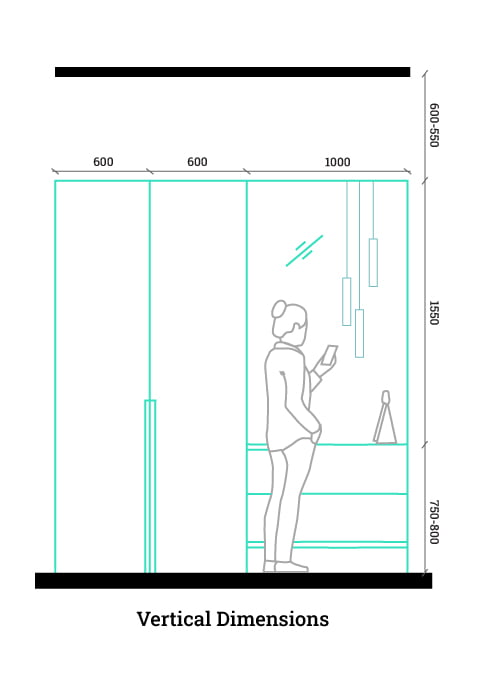
Standard Sizes of Bed
Sizes can changes from location to location and as per user need.
| Standard Bed Sizes | ||
| Type | Width | Length |
| King | 1800 | 2100 |
| Queen | 1500 | 2050 |
| Double | 1350 | 2050 |
| Single | 900 | 2050 |
| Day Bed | 750 | 1900 |
Avoid mistakes while designing the bedroom
Poor circulation
There’s nothing worse than not giving the user enough space to freely move around in any space (a bedroom or any room). The circulation needs to be smooth; it should not collide with any furniture, and there should be good clearance from the furniture. A minimum of 600–750 mm of space is required for one person to move freely.
Ignoring the position of the window
The position of the window is a deciding factor in the good design of the bedroom because the window is connected to many benefits like view, air, and natural light. Windows provide a sense of connectivity to the outside world for a user in their bedroom. Good surrounding views, proper air with cross ventilation, morning sun, and natural light are the benefits we get if the position of the window is good.
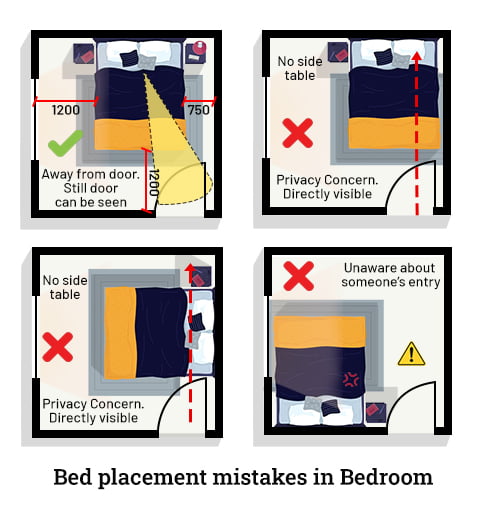
Choosing incorrectly sized furniture.
The furniture did more than just fill a space; it met our needs and provided numerous benefits. Wrong-sized furniture does not just affect the design; it all creates chaos for the user. That is for the standard dimensions of the furniture to be followed for a good environment in any space.
Inadequate connection of spaces
The connection of spaces creates the best design and makes it more functional. We needed to make extra efforts to avoid this without connecting the spaces, so we need to give more time to connecting the spaces while designing them. Like the placement of the bed, TV unit, sit-out area, dresser, and toilet. These spaces need to be connected in a good manner.
Not utilizing vertical space
The vertical spaces also need proper attention, as do the horizontal spaces. Creating a good arrangement with vertical spaces can provide extra space for horizontal spaces or increase circulation.
A Question for the Readers
Comment your answers below…




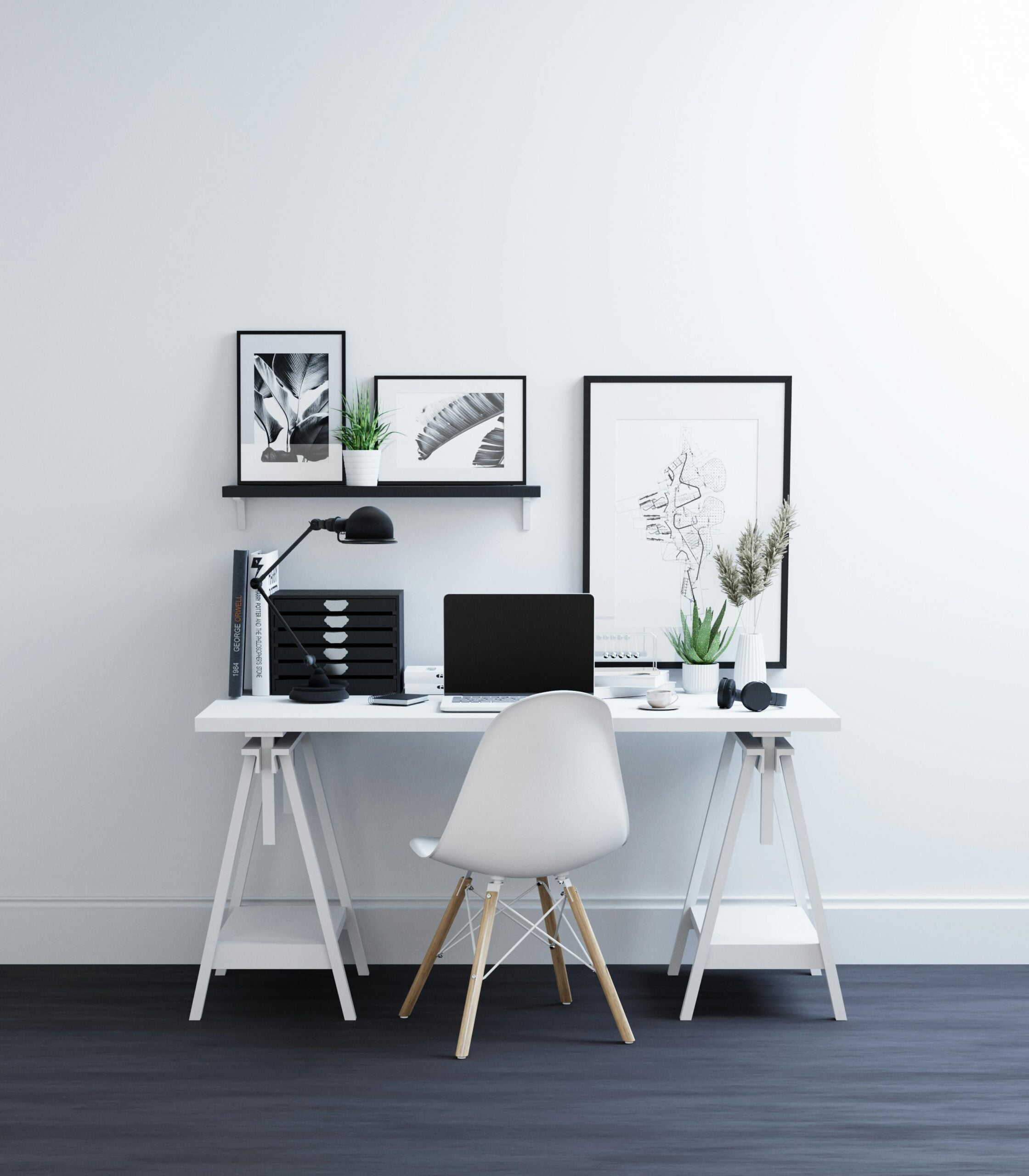
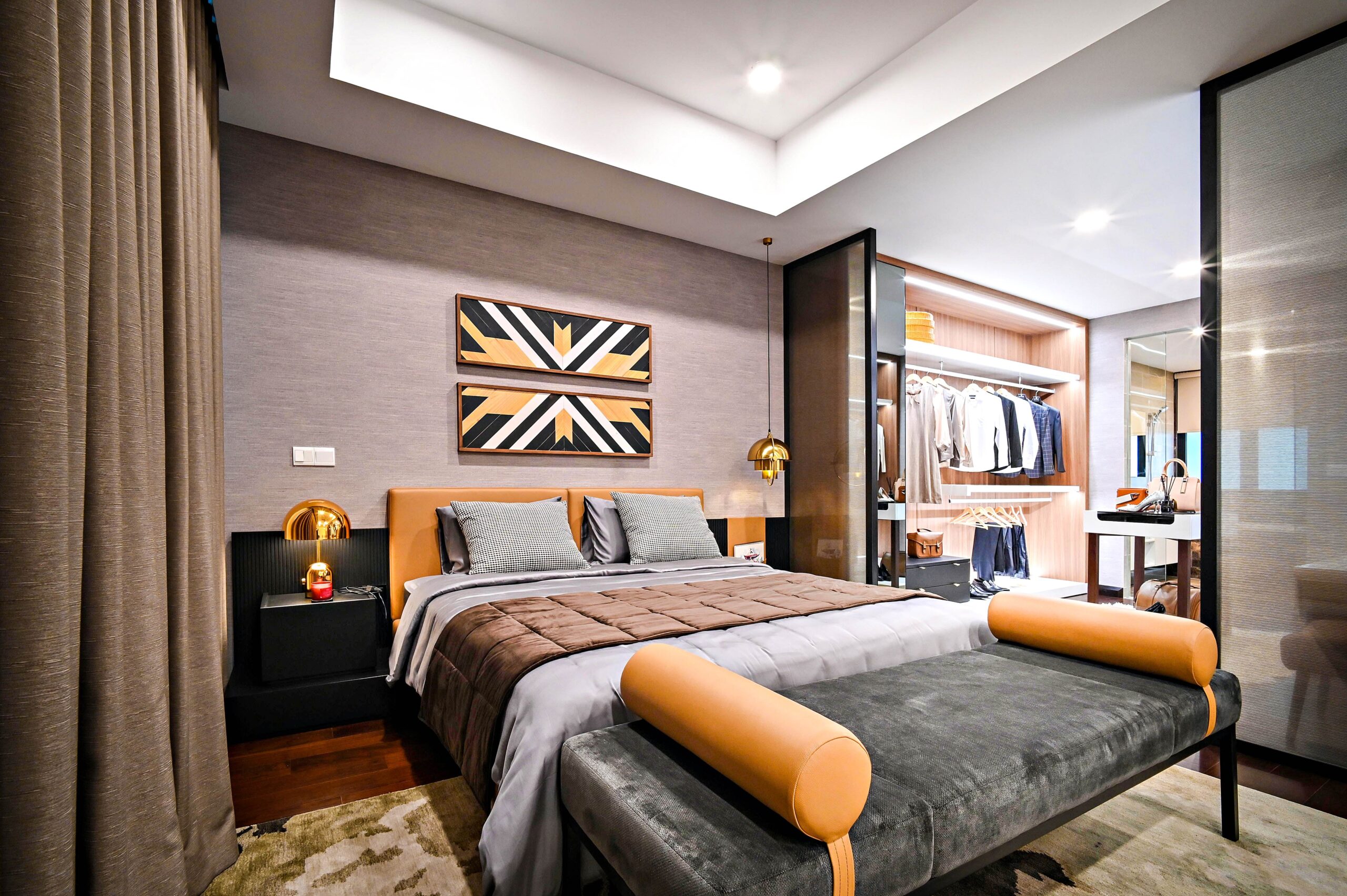


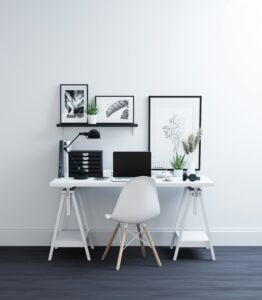
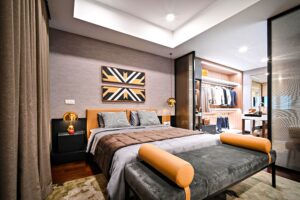
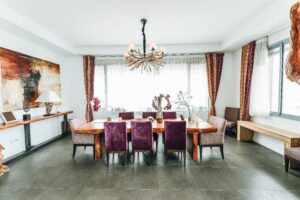
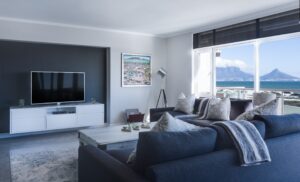

10 Responses
Very Good and detailed content💯
Thanks, I appreciate your response. Do share it with your friend.
Good detailed information
Thanks, Keep reading
Amazing and very helpful contents really love it
It’s good to know that our content has value for you; keep reading and sharing.
Thank you so much for this content
Good to know, you found it helpful. Keep reading, and do share it with your fellow friends.
The content and information provided are commendable, but integrating 3D elements would significantly enhance the quality of engagement for readers. This addition could attract a wider range of viewers beyond just architects or draftsman, enriching the overall experience.
Thank you for your valuable feedback! Your input is greatly appreciated, and I will definitely consider incorporating 3D elements to further improve the quality of the content.